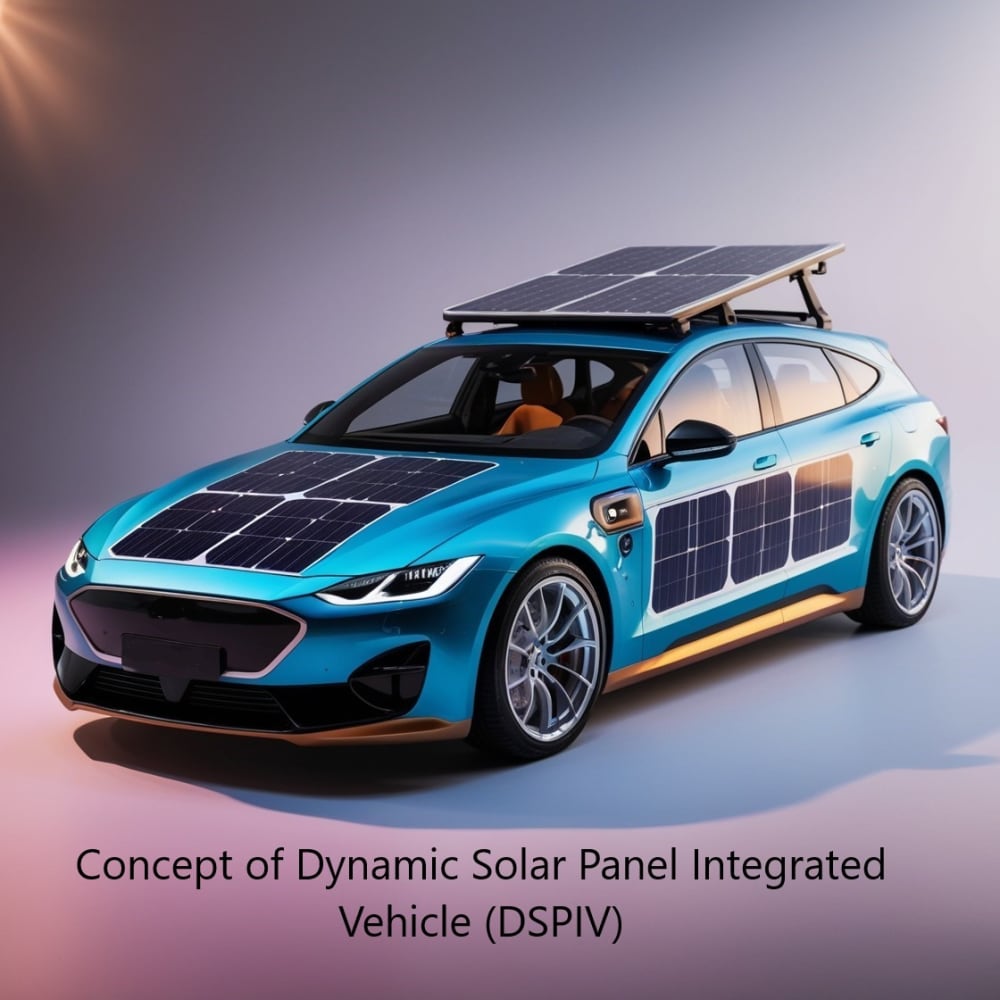In a sustainable energy-focused world, the automotive industry is working to reduce carbon emissions and fossil fuel reliance. The Dynamic Solar Panel Integrated Vehicle (DSPIV) concept integrates advanced solar panel technology into the vehicle's exterior to enhance sustainability. This includes photovoltaic (PV) modules that propel the vehicle, power essential accessories, extend the vehicle's range, and reduce dependence on grid charging.
A. Innovative Design features of DSPIV:
1. Solar Skin Integration
The DSPIV incorporates PV modules into the vehicle's design, which can be integrated into various parts such as the roof, hood, trunk, or sides. These modules contribute to the vehicle's propulsion and power accessories like ventilation, air conditioning, heated seats, and interior lighting, extending the vehicle's range and reducing the need for grid charging.
2. Dynamic Solar Tracking System
The DSPIV has a dynamic solar tracking system to maximize sunlight and increase energy output. It can provide up to 6.5% of the range on a full charge during the sunniest summer months and up to 1.25% during the least sunny winter months.
3. Energy Storage and Management
The PV modules generate and store electricity in the vehicle's battery to power the vehicle and accessories. They also help manage the battery's temperature. Integrating an Energy Management System (EMS) with the grid allows bidirectional control of charging and discharging, maximizing energy use.
4. Integrated Vehicle-to-Grid (V2G) Capability
The DSPIV features Vehicle-to-Grid (V2G) technology, enabling bidirectional power flow. This allows vehicles to draw power from the grid and return surplus power. EV owners can benefit from potential revenue generation by using Renewable Energy Sources (RESs) for charging, reducing the overall cost of ownership and contributing to the abatement of carbon emissions.
B. Manufacturing aspects:
1. Advanced Solar Panel Technology
The DSPIV uses advanced, lightweight, and efficient PV modules integrated into the vehicle's exterior surfaces.
2. Enhanced Efficiency and Sustainability
The PV modules convert sunlight into electricity, extending the vehicle's driving range, reducing the need for frequent grid charging, and lowering the carbon footprint while contributing to energy independence.
3. Seamless Design Integration
The DSPIV design prioritizes aesthetics and functionality, seamlessly embedding solar panels into the sleek, aerodynamic exterior to maintain a modern and attractive appearance.
4. Broader Impact
The DSPIV concept is a big step towards a more sustainable future for automobiles, reducing reliance on conventional charging and using renewable energy for greener transportation.
C. DSPIV Marketing Strategies:
1. Digital Marketing and Social Media Engagement
Use digital ads for eco-enthusiasts and tech adopters, and maintain active social media with DSPIV updates and customer stories.
2. Partnerships and Sponsorships
Partner with eco-organizations, universities, and governments for DSPIV promotion. Sponsor green tech events and initiate DSPIV pilot fleets for visibility.
3. Educational Content Campaign
Launch an educational campaign with DSPIV-centric videos, articles, and influencer collaborations. Conduct webinars and workshops for customer education.
This innovative approach highlights the potential of renewable energy in the automotive sector and sets a new standard for integrating solar technology. The DSPIV merges cutting-edge technology with environmental responsibility as the world moves towards sustainability.
Like this entry?
-
About the Entrant
- Name:Prasanna Sutar
- Type of entry:teamTeam members:
- Shailesh Sonawane
- Debjyoti Bandyopadhyay
- Sandeep Rairikar
- Sukrut Thipse
- Patent status:none






